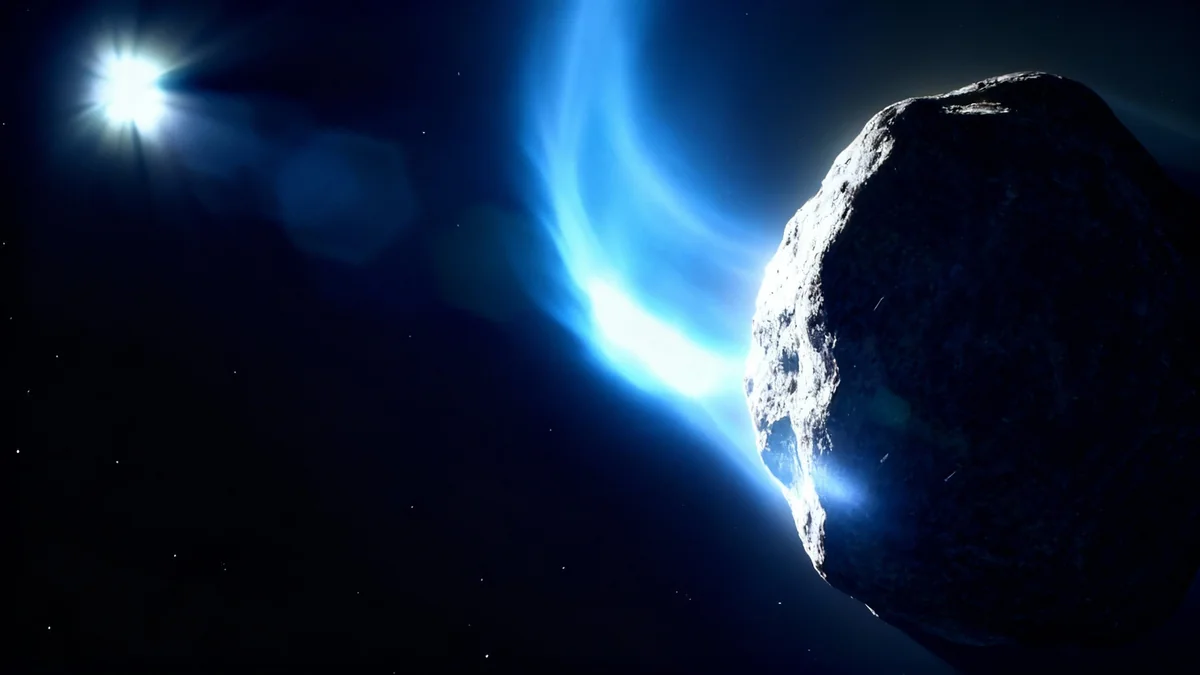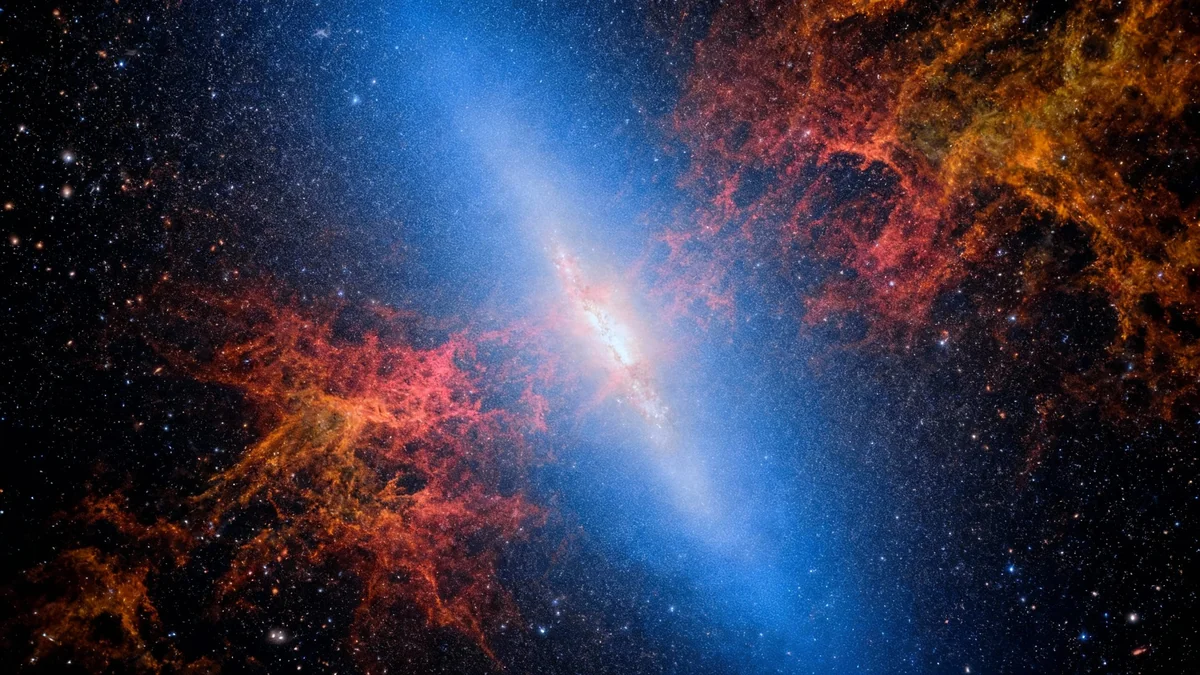An object visiting our solar system from interstellar space has captured the attention of astronomers after it unexpectedly and rapidly brightened during its closest approach to the Sun. The object, designated 3I/ATLAS, is only the third of its kind ever detected, and its unusual behavior is posing a new puzzle for scientists.
The visitor, believed to be a comet, reached its nearest point to the Sun on October 29. Observations from solar observatories revealed a surge in luminosity that far exceeded the expectations for a typical comet, sparking a debate about its composition and origin.
Key Takeaways
- 3I/ATLAS, the third known interstellar object, displayed a rapid and unexplained increase in brightness as it passed the Sun.
- Scientists propose its extreme speed of approximately 137,000 mph or an unusual composition as possible causes for the event.
- The object appears distinctly bluer than the Sun, suggesting significant gas emissions are contributing to its visibility.
- Further detailed observations are on hold until the object emerges from behind the Sun's glare in late 2025.
A Rare Glimpse of an Outsider
Our solar system occasionally plays host to travelers from other star systems. These interstellar objects provide a rare opportunity to study material formed around distant stars. 3I/ATLAS is the latest such visitor, following the discoveries of 'Oumuamua in 2017 and Borisov in 2019.
Detected in early July, 3I/ATLAS was immediately flagged as an object of interest due to its trajectory. Unlike planets, asteroids, and most comets in our system, which follow elliptical orbits around the Sun, this object is on a path that will eventually carry it back out into the vastness of interstellar space.
Its journey through our neighborhood has been swift. Scientists clocked its velocity at a blistering 137,000 miles per hour, a speed that significantly surpasses that of its known interstellar predecessors. This immense velocity is one of the key factors being considered as a potential reason for its recent, dramatic behavior.
The Mystery of the Sudden Glow
As 3I/ATLAS neared the Sun, astronomers anticipated it would brighten, a common phenomenon for comets. The Sun's radiation heats a comet's icy nucleus, causing ice to turn directly into gas in a process called sublimation. This process releases dust and gas, forming a temporary atmosphere, or coma, and a tail that reflects sunlight, making the comet appear brighter.
However, the rate at which 3I/ATLAS intensified caught observers by surprise. Data from multiple spacecraft, including NASA’s Solar Terrestrial Relations Observatory (STEREO) and the European Space Agency’s Solar and Heliospheric Observatory (SOHO), showed a brightening pattern that was far more rapid than that of typical comets from our own system's Oort cloud.
By the Numbers: 3I/ATLAS
- Designation: 3I/ATLAS (Third Interstellar object)
- Velocity: Approximately 137,000 mph (220,480 km/h)
- Perihelion Date: October 29, 2025
- Next Observation Window: November-December 2025
In a research paper analyzing the event, Naval Research Laboratory astrophysicist Karl Battams and Lowell Observatory postdoctoral fellow Qicheng Zhang highlighted the anomaly. They wrote that the reason for the object's rapid brightening, which “far exceeds the brightening rate of most Oort cloud comets at similar [distances], remains unclear.”
Exploring the Possible Causes
Without the ability to study the object up close, scientists are left to theorize about the cause of its unusual display. The leading hypotheses center on its unique characteristics as an interstellar traveler.
An Effect of Extreme Speed
One possibility is that its incredible speed is playing a role. The high velocity could be causing more intense interactions with solar radiation and the solar wind, leading to a more vigorous release of gas and dust from its surface than would be seen in a slower-moving comet.
A Clue in its Composition
Another theory points to the object's physical makeup. Having formed in a different star system, 3I/ATLAS could possess a composition unlike any comet native to our solar system. The researchers suggest that “oddities in nucleus properties like composition, shape, or structure” could be a contributing factor. These unique properties might have been acquired in its home system or during its long journey through interstellar space.
“Oddities in nucleus properties like composition, shape, or structure — which might have been acquired from its host system or over its long interstellar journey — may likewise contribute [to the rapid brightening].”
Adding to the evidence of a unique composition, analysis revealed that 3I/ATLAS is “distinctly bluer than the Sun.” This coloration is consistent with the idea that gas emissions, rather than just reflected sunlight from dust, are responsible for a large portion of its brightness. This suggests the presence of specific volatile materials that are sublimating intensely under the Sun's heat.
An Uncertain Future and a Long Wait
The scientific community now faces a period of anticipation. 3I/ATLAS is currently obscured from Earth-based telescopes, having passed behind the Sun from our vantage point. It will not become visible again until late 2025.
What is an Interstellar Object?
An interstellar object is an astronomical body (such as an asteroid or a comet) that is passing through our solar system but is not gravitationally bound to the Sun. Its hyperbolic trajectory indicates it originated from outside our solar system and will eventually exit it, continuing its journey through the galaxy. Studying these objects gives scientists direct samples of material from other star systems.
When it does reappear in November and December of 2025, it will be in darker, night skies, providing a prime opportunity for detailed characterization. Astronomers are eager to conduct spectroscopic analysis to determine its chemical composition, which could confirm whether it is indeed made of materials different from those found in our own cosmic backyard.
Until then, its behavior remains unpredictable. “Without an established physical explanation, the outlook for 3I’s post-perihelion behavior remains uncertain,” the researchers noted. They added that a continued brightening, a plateau, or even a rapid fading are all plausible scenarios. For now, the mysterious interstellar visitor continues its silent journey, leaving a trail of unanswered questions in its wake.





